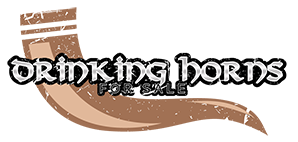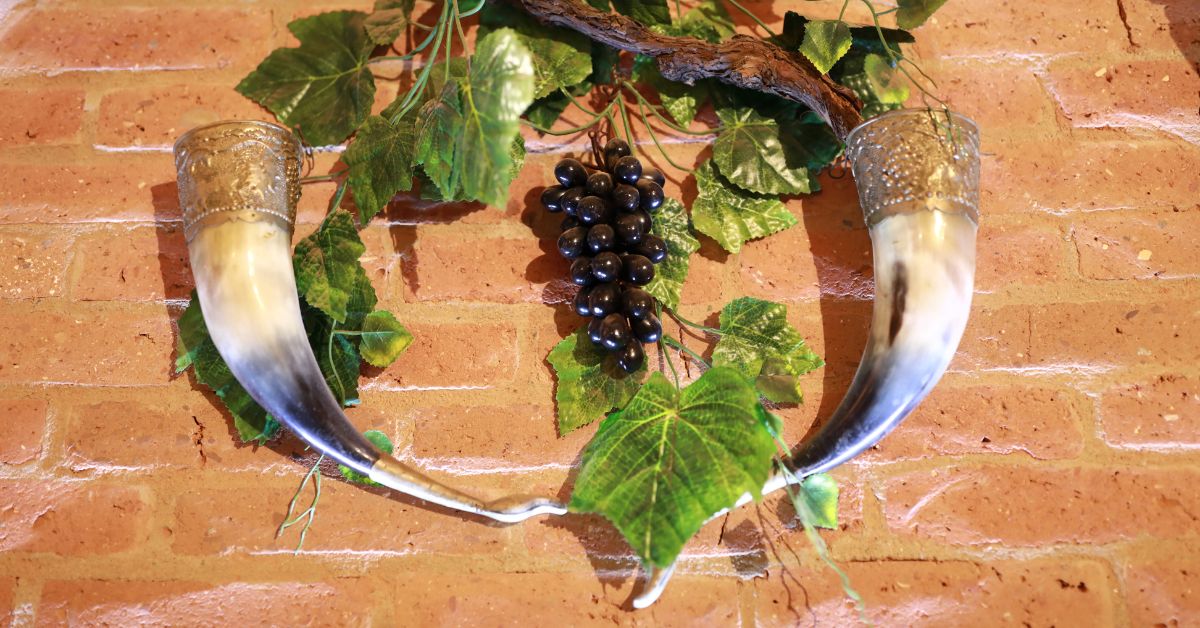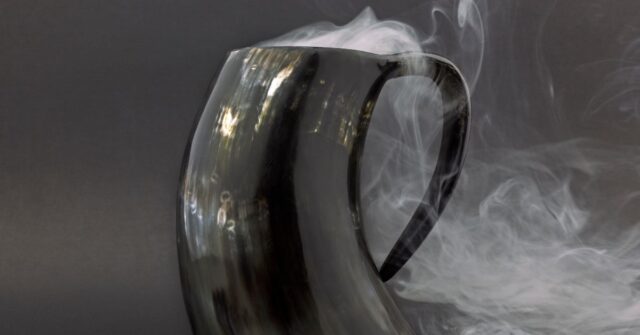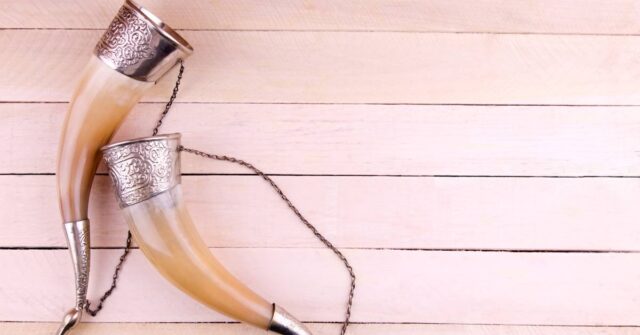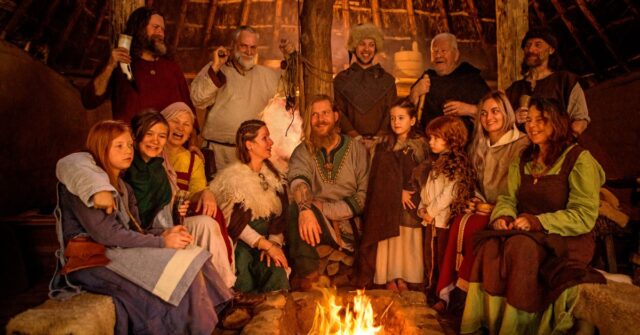Drinking horns, steeped in rich history and mythology, have transcended their ancient origins to become iconic symbols in modern culture.
This blog post explores their journey from ancient times to contemporary media and their current-day relevance.
Introduction
Drinking horns have long held a place of fascination in various cultures, evolving from simple utilitarian objects to symbols of celebration and status.
In this comprehensive guide, we delve into their historical significance, their depiction in modern media, and their continued relevance today.
The Timeless Appeal of Drinking Horns
The appeal of drinking horns lies in their deep connection to the past and their embodiment of ancient traditions.
These vessels, often associated with Vikings, have been used by various cultures throughout history, each adding unique elements to their design and use.
Today, they continue to captivate, offering a tangible link to a bygone era.
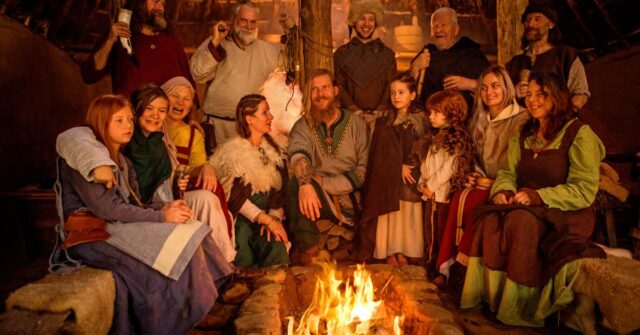
Historical Background of Drinking Horns
Understanding the historical context of drinking horns enriches their modern significance.
These vessels were not merely functional items but carried deep cultural and symbolic meanings across various civilizations.
Origins and Early Use
The early use of drinking horns spans several ancient cultures, each contributing to their evolution.
The origins of these vessels are traced back to prehistoric times when animal horns were hollowed out for practical uses, gradually becoming integral to social and ceremonial practices.
The Thracians and Scythians
Drinking horns first appeared prominently among the Thracians and Scythians.
These ancient peoples, residing in the modern-day Balkans and southern Siberia respectively, used horns from goats, rams, and bulls to drink their libations.
Historical texts like Xenophon’s “Anabasis” highlight their importance, noting that Thracian leaders would drink from these vessels during rituals and ceremonies.
Greek and Roman Adaptations
The Greeks and Romans adapted the use of drinking horns, integrating them into their cultural practices.
Greeks often used them in Dionysian rituals, while Romans crafted more elaborate versions using glass and precious metals.
These adaptations reflected both the practical and ceremonial importance of drinking horns in these societies.
The Viking Era
The Viking era is perhaps the most iconic period associated with drinking horns. Vikings elevated the drinking horn to a symbol of their warrior culture, mythology, and social rituals.
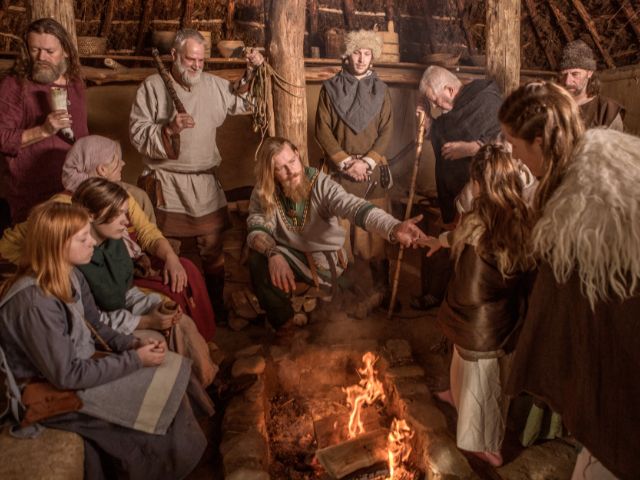
Symbolism and Ceremonial Use
In Viking culture, drinking horns were not only used for daily consumption of mead and ale but also held significant ceremonial value.
They featured prominently in Norse mythology, with gods like Thor and Odin depicted using them.
The Prose Edda, a cornerstone of Norse mythological texts, recounts tales of gods and heroes drinking from enchanted horns.
Archaeological Discoveries and Artifacts
Archaeological finds across Scandinavia have uncovered numerous drinking horns, often richly decorated with intricate carvings and metalwork.
These artifacts provide insight into the craftsmanship and cultural importance of drinking horns, with notable examples displayed in museums such as the British Museum and the Swedish Museum of National Antiquities.
Cultural Significance in Modern Media
The enduring allure of drinking horns has led to their frequent depiction in modern media, symbolizing a connection to ancient traditions and adding authenticity to historical narratives in movies, TV shows, and literature.
Drinking Horns in Movies
Movies have utilized drinking horns to evoke a sense of historical authenticity and cultural depth.
These vessels are often seen in films depicting Viking and medieval times, helping to create a realistic portrayal of these eras.
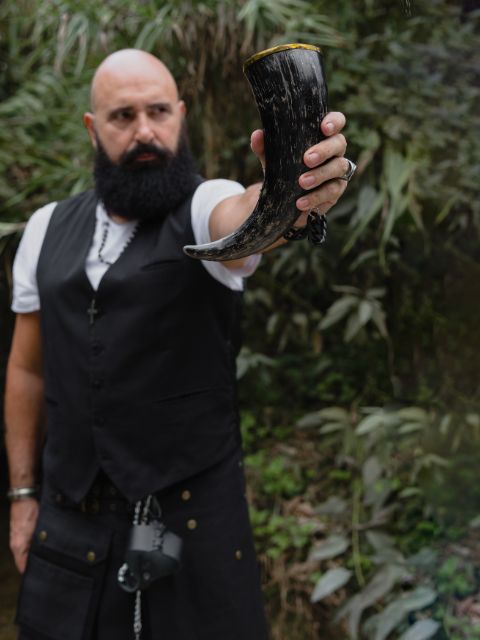
Iconic Movie Appearances
Notable movies featuring drinking horns include the “Thor” series from Marvel, where the gods of Asgard are shown partaking in revelry with these ancient vessels.
Another example is the “Lord of the Rings” trilogy, where characters from Rohan and other ancient kingdoms use drinking horns in their feasts.
Symbolism in Cinematic Narratives
In films, drinking horns often symbolize bravery, tradition, and the warrior spirit.
They are used in scenes of celebration and camaraderie, highlighting the bonds formed through shared rituals and traditions.
Drinking Horns in TV Shows
Television has also embraced the imagery of drinking horns, especially in shows focused on historical and fantastical themes.
These shows use drinking horns to add depth to their portrayal of ancient cultures.
Popular TV Shows Featuring Drinking Horns
TV shows like “Vikings” and “Game of Thrones” prominently feature drinking horns.
In “Vikings,” the use of these vessels underscores the authenticity of the Viking lifestyle, while “Game of Thrones” uses them to depict the customs of various noble houses and cultures.
Character Associations and Symbolic Meanings
Characters who use drinking horns in TV shows are often portrayed as strong, honorable, and connected to their heritage.
These vessels serve as symbols of their identity and the values they uphold.
Drinking Horns in Literature
Literature has long celebrated the mystique of drinking horns, weaving them into tales of adventure, heroism, and tradition.
From epic poems to modern novels, these vessels enrich the narrative with their historical and symbolic significance.
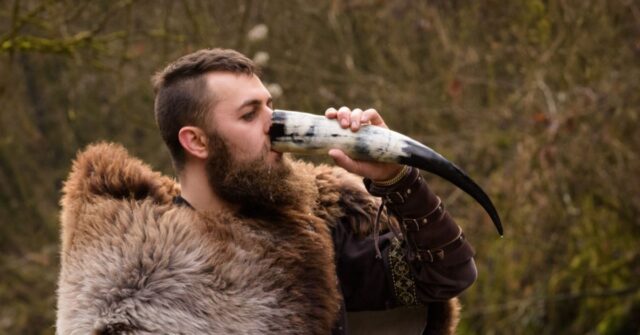
Depictions in Historical Novels
Historical novels often feature drinking horns to bring authenticity to their settings.
Authors use these artifacts to transport readers to ancient times, providing a tangible connection to the past. Books like “Beowulf” and “The Last Kingdom” series incorporate drinking horns as part of their rich cultural tapestry.
Fantasy and Mythological References
In fantasy literature, drinking horns are used to evoke the grandeur of mythical worlds.
They appear in works like J.R.R. Tolkien’s “The Hobbit,” where they symbolize the rich traditions of Middle-earth’s various cultures. These references help create immersive and believable fantasy settings.
Modern-Day Usage of Drinking Horns
Despite their ancient origins, drinking horns have found a place in contemporary society.
They are used in various modern contexts, from historical reenactments to unique drinking experiences at festivals.
Reenactments and Festivals
Reenactments and cultural festivals have embraced drinking horns as key elements in their celebrations.
These events offer a glimpse into the past, allowing participants to experience historical traditions firsthand.

Historical Reenactments
Historical reenactments, such as Viking festivals and medieval fairs, often feature drinking horns as part of their authentic portrayal of ancient life.
Participants don period costumes and use these vessels to recreate the atmosphere of historical gatherings.
Cultural and Renaissance Festivals
At cultural and Renaissance festivals, drinking horns are popular among attendees who seek to immerse themselves in the festivities.
These events celebrate history and tradition, with drinking horns serving as a central feature in many activities and rituals.
Craftsmanship and Production
The art of crafting drinking horns has been preserved and revitalized by modern artisans.
These craftsmen use traditional methods to create both functional and decorative pieces that honor ancient techniques.
Materials and Techniques
Modern drinking horns are crafted from ethically sourced animal horns, typically from cows or goats.
The horns undergo a meticulous process of cleaning, shaping, and polishing. Artisans often add intricate carvings and metal fittings to enhance the aesthetic appeal.
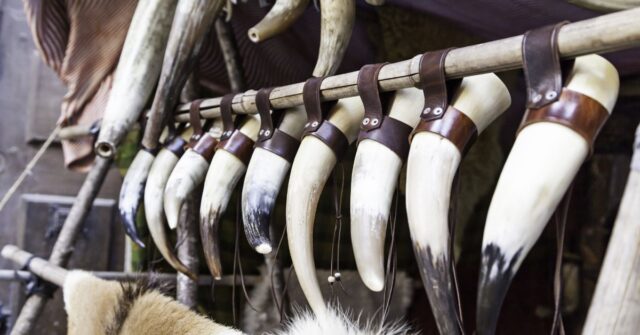
Handcrafted vs. Mass-Produced Horns
Handcrafted drinking horns are prized for their unique craftsmanship and attention to detail. Each piece is a labor of love, reflecting the skill and dedication of the artisan.
In contrast, mass-produced horns offer a more affordable option but may lack the individuality and quality of handcrafted items.
Contemporary Symbolism
In modern times, drinking horns symbolize a connection to history and tradition. They are used in various contemporary rituals and celebrations, maintaining their cultural relevance.
Resurgence in Popularity
There has been a resurgence in the popularity of drinking horns, driven by a growing interest in historical and fantasy genres.
Fans of medieval and Viking culture, as well as enthusiasts of fantasy literature and media, often seek out these items as collectibles and functional pieces.
Modern-Day Rituals and Ceremonies
Drinking horns are used in various modern-day rituals, such as weddings and themed parties.
They add a unique and historical touch to these celebrations, allowing participants to connect with ancient traditions in a meaningful way.
Caring for Your Drinking Horn
Proper care and maintenance are essential to preserve the beauty and functionality of your drinking horn. Following a few simple guidelines can ensure its longevity.
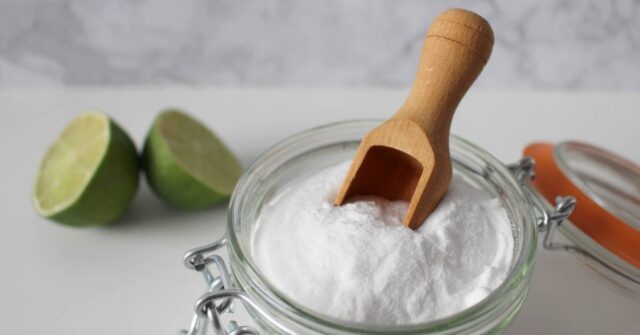
Maintenance Tips
Regular maintenance helps keep your drinking horn in excellent condition. It’s important to clean it properly and store it correctly to prevent damage.
Cleaning and Preservation
To clean your drinking horn, use lukewarm water and a mild soap. Avoid using harsh chemicals or abrasive materials, as they can damage the horn’s surface.
After washing, dry it thoroughly with a soft cloth. To maintain its shine, you can occasionally apply a small amount of food-safe oil.
Storing Your Drinking Horn
When not in use, store your drinking horn in a cool, dry place away from direct sunlight. Using a stand can help maintain its shape and prevent damage.
Avoid extreme temperatures and humidity, as these can cause the horn to warp or crack.
Conclusion
The journey of the drinking horn from an ancient utilitarian object to the modern cultural icon is a testament to its enduring appeal.
Whether used in historical reenactments, depicted in media, or treasured as a collector’s item, drinking horns continue to captivate and inspire.
By understanding their rich history and cultural significance, we can appreciate the depth and beauty these ancient artifacts bring to our modern lives.
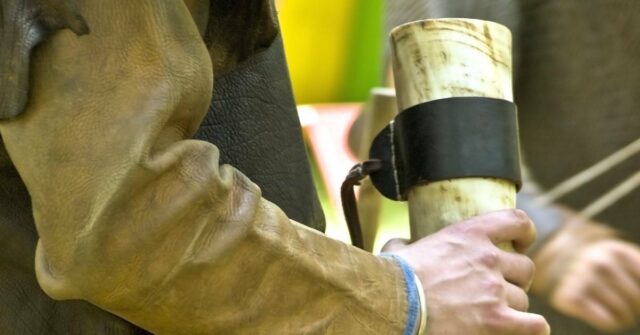
The Enduring Legacy of Drinking Horns
Drinking horns have left an indelible mark on history and continue to be symbols of tradition and heritage.
Their presence in modern culture, from movies to festivals, underscores their timeless nature.
By exploring their origins and contemporary uses, we honor the legacy of these fascinating vessels.
Embracing Tradition in Modern Times
As we embrace the traditions of the past, drinking horns offer a unique way to connect with history.
Whether you are a collector, a history enthusiast, or someone who enjoys the aesthetic appeal of these ancient artifacts, drinking horns provide a tangible link to a rich and storied past.
By preserving and celebrating these traditions, we keep the spirit of history alive in our modern world.
